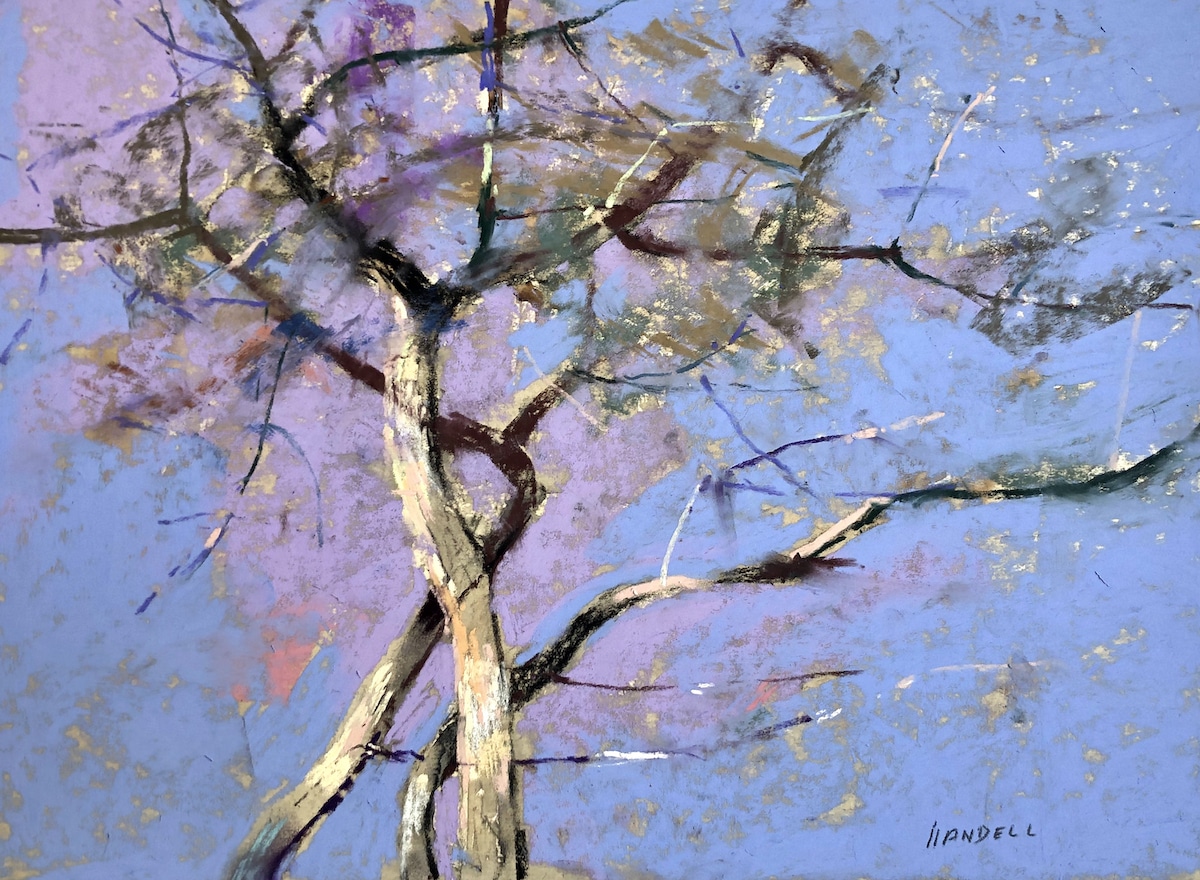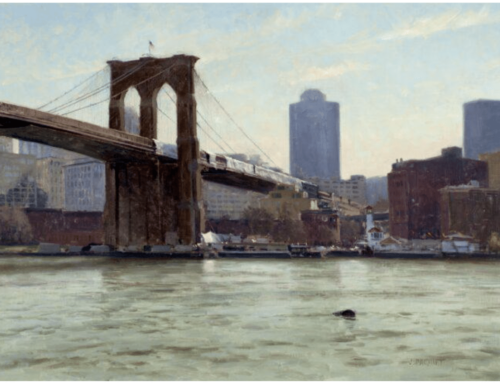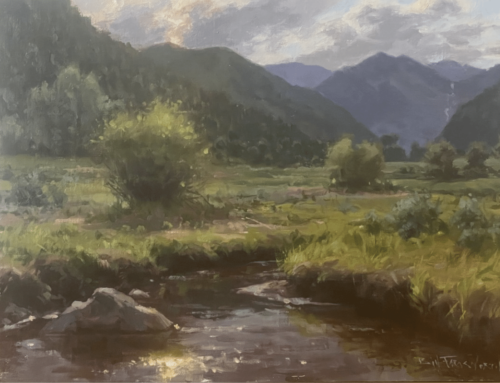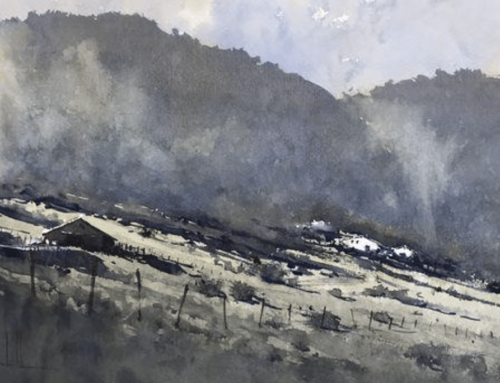In this edition of Inside Art, Handell offers some art-insider tips on tree painting. He goes into much more detail about his unique process and discusses rocks and water as well in his instructional video Painting Rocks and Water in Oil.
Regular Inside Art readers know that the ultimate tree-painting gospel, as far as I am concerned, is the chapter titled “Trees, How to Understand Them” in the classic book John Carlson’s Guide to Landscape painting, which I have written about here. Carlsen’s work applies as much to pastel and watercolor as to oil and acrylic.
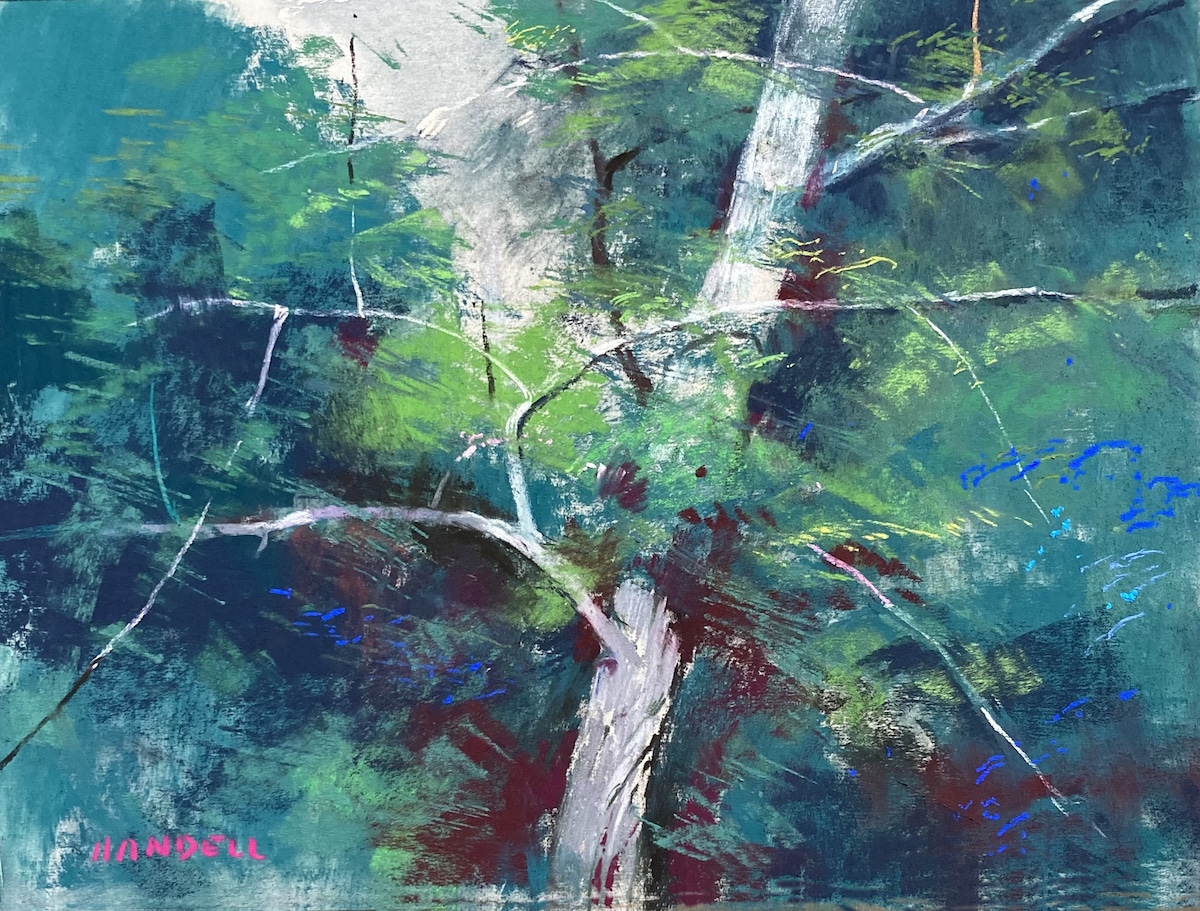
Albert Handell, One Summer’s Moment, pastel, 12×16 inches
The same cross-medium application obtains in Handell’s artistic methods. Handell, by the way, will be one of the 60 instructors offering workshops at the 2022 Plein Air Convention & Expo (PACE) in Sante Fe next month.
Like his other landscape work, Handell’s pastel and oil paintings of trees demonstrate his uncommonly sharp eye for color, shape, and line. On the one hand, there’s Carlson’s emotional/psychological approach. On the other, there’s Handell’s empirical/observational approach. I think a good painter of trees should combine a little of both.
Handell uses a horizontal format for many of his paintings of trees, which is counter-intuitive for such vertical subject matter. “I like to pan in,” he says, on the branch forms, to capture nuances of color in and out of light and shadow.
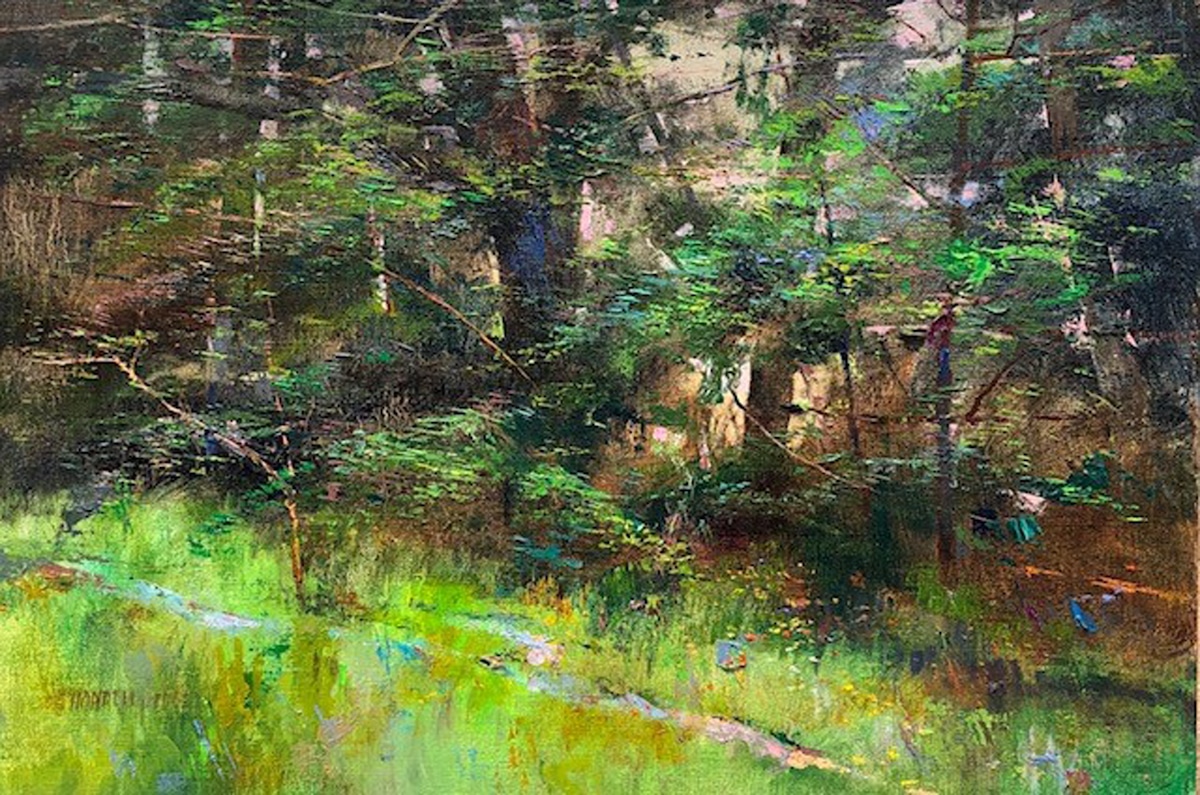
Albert Handell, Forest Rhythms, oil, 18×26 inches
“There’s what I call the spiraling growth of the trees, what I can in the bark. I look for strong cast shadows (of branches) and light on the trunk that shows the form of the tree and where the light is coming from. And subtle cast shadows from other trees across the way, and flat light that shows the color nuances of the trees’ surfaces in and out of shadow.”
Handell typically begins a tree composition by taking the largest trunk as a starting point and taking care to block it in off center. He works out intuitively from there. He starts a five-minute in pencil and watercolors. “If it’s a predominantly gray tree, such as a pine, then I work in diluted Paynes gray, if it’s a brown tree, then Vandyke brown.” If using pastels, he works dark to light.
Cheer it Right Up
As for color, Handell favors “translations of colors,” using “different colors as a symbol of value.” When painting summer greens, for example, he might add a layer of burnt sienna of the same value over his initial layer of green. That new layer “cheers it right up,” Handell says. “I don’t think about darks and lights as much as color. I love opaque color that sits on top of transparent – the same value but opaque.”
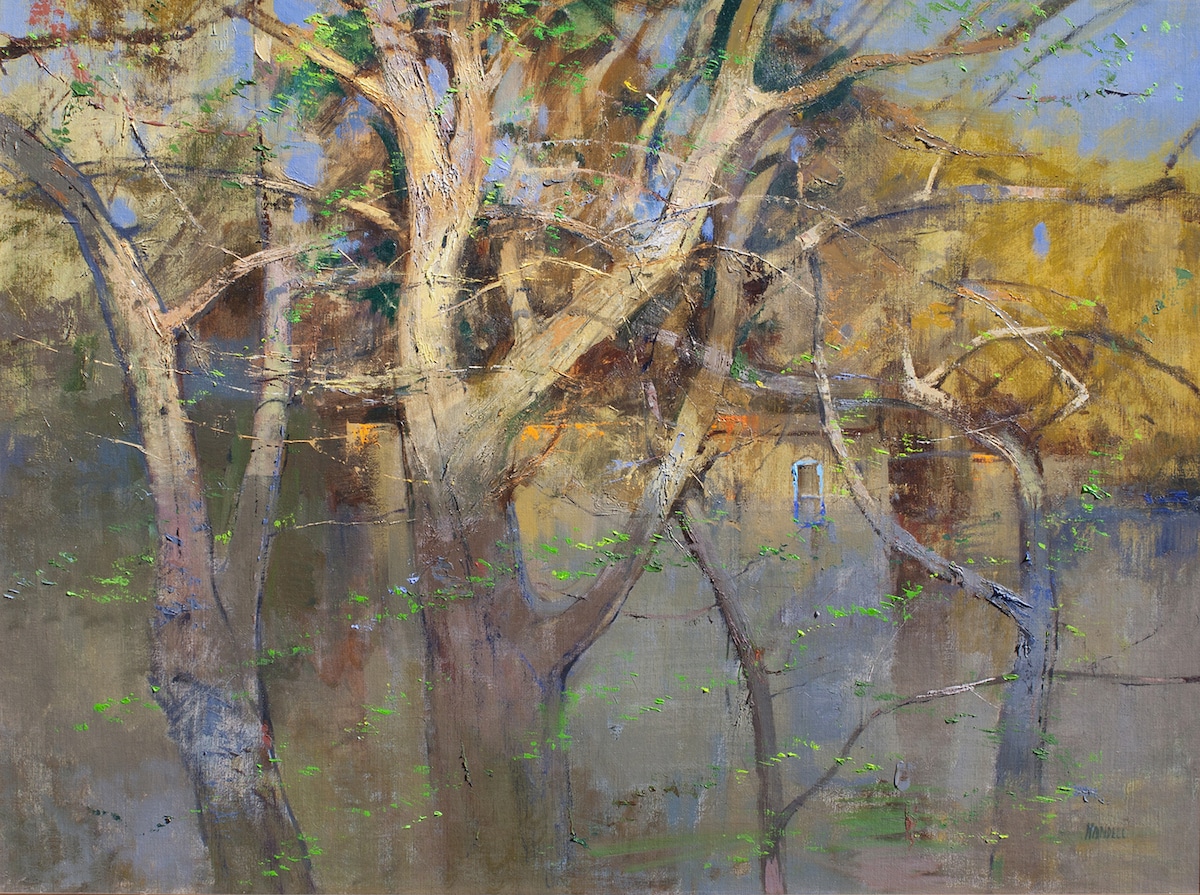
Albert Handell, Evening Glow on Palace Ave., Oil 30X40 inches
Once the sketch is in place, he likes to scrub in a dark underlayer with very little medium, keeping it thin enough to be transparent. Once that first layer is dry enough, he adds the illusion of foliage through an opaque middle tone that “sits right into the transparency” (so both are visible in the final passage).
Handell completes the passage by using the edge of a small palette knife to tap in “floating leaves,” taking care to convey the “rhythmic quality” of the trees – all of which leads him “to paint the branch as if there’s nothing more important.”
A Different Way of Looking at Trees
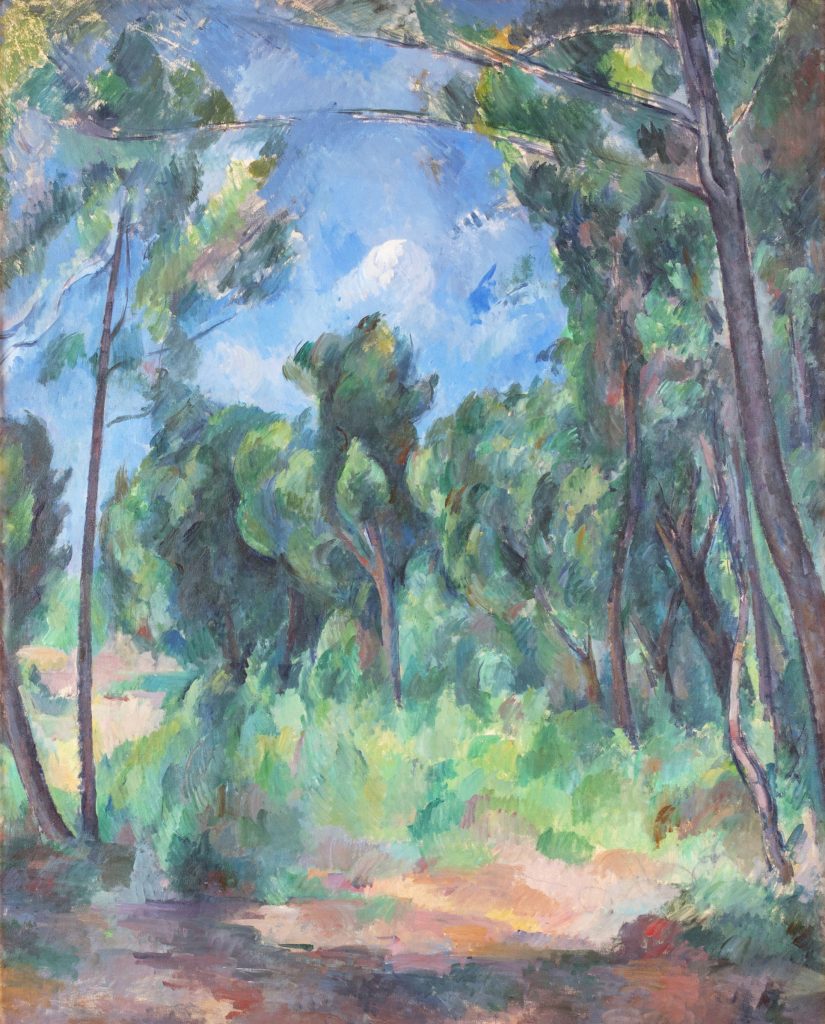
Paul Cézanne, The Glade, around 1895.
Next month, Sotheby’s will auction several paintings being deaccessioned from the collection of the Toledo Museum of Art (TMA). The consignment includes Paul Cézanne’s Clairière (The Glade) from around 1895, expected to fetch between $30 million and $40 million.
A painting filled with light and movement, The Glade (or Clearing) exemplifies Cézanne’s manner of building form with patches of color patterned across a flattened, geometric picture plane – thereby showing the way for both Picasso and Matisse and the subsequent artists who invented modern abstraction as the twentieth century began.

